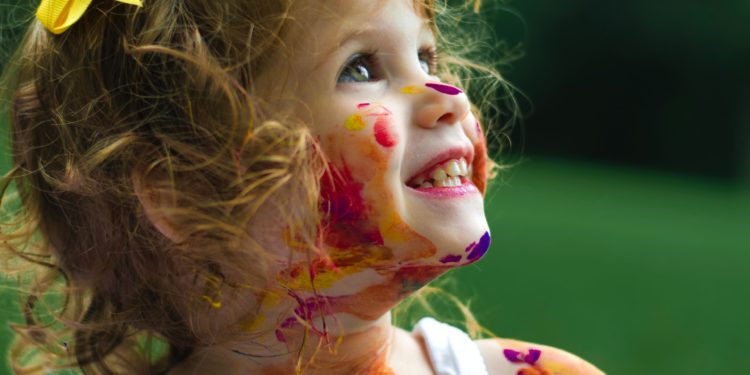Whether you’re convinced your child is a Monet in the making or you’re unsure if they have any artistic talent at all, there’s one thing you can be certain of — all children have a natural creativity just waiting to be unleashed.
As parents and caregivers, we have the precious opportunity to fuel this artistic flame and encourage their creative endeavours. But if you’re feeling a bit stuck on how to inspire your child to get artistic, don’t worry — this article is here to help.
Here, we’ll explore three powerful ways to do just this and ignite their passion for art.
1. Display their artwork
Picture this scene: your child beams with pride on the last day of term, struggling under the weight of a mountain of artistic treasures they’ve created at school. They hand over their collection of masterpieces: an A4 sheet covered in blue and yellow splodges (Van Gogh’s Starry Night), an egg carton (Blackbeard’s treasure chest), and several haphazardly glued cereal boxes (The Orion spacecraft).
As parents, we’ve all experienced guilt when faced with the challenge of displaying and preserving our kids’ artwork. We’ve often succumbed to discreetly yet unceremoniously disposing of their precious creations in the recycling bin. Of course, you can’t keep all of their weird and wonderful artworks forever, but imagine the delight in your child’s eyes if they see their creations treated like genuine works of art.
Forget the fridge — we’re talking about taking your child’s favourite masterpieces and transforming them into a mini art gallery. You might opt for the help of professional framers here, who can help elevate the piece to be that extra bit extra-special. The London-based company Soho Frames, for one, specialises in: “beautiful handmade, bespoke or custom gallery standard picture frames for your prints, posters, artworks, and more.” Tate Modern, eat your heart out.
2. Explore other mediums
While some people may marvel at Monet’s impressionist paintings or go wild for Warhol, not every child will grasp or be inspired by art in painting form — and that’s perfectly normal.
When most of us think of art, we think of paintings — but, “there are seven main kinds of art,” Art in Context explains. “Most of which have been around for centuries if not thousands of years. These different types of art are painting, sculpture, architecture, literature, music, cinema, and theatre.”
Recently, ceramics and sculptures have been taking the creative world by storm. Tactile, calming, and trendy, it seems that everyone — from Britain’s royal children to a certain loquacious pig — has been getting in on the action and enjoying the benefits of pottery.
Although there are classes designed specifically for children, the therapeutic practice of pottery flourishes in a tranquil home environment. Like playdough, it’s simple to set up and put away, plus there are home pottery kits available for ultimate convenience. Pott’d, for one, offers an air-dry starter kit packed with “everything you need to create your own unique clay creations at home”, including 2kg of clay, pottery tools, paint, and brushes.
3. Take them to a gallery
In the blog post, ‘Kids in Art Galleries: Do or Don’t?’ M Contemporary reminds us that art has no age limit. The advantages of taking children to galleries surpass any potential drawbacks, making it an enriching and worthwhile experience. “Viewing pieces of art boosts creativity, subconsciously propelling children to think outside the proverbial box. It widens their horizons, develops inquisitiveness and fosters storytelling.”
Here in the UK, we’re fortunate to enjoy a vibrant and diverse art scene. This is particularly evident in the cultural meccas of Bristol, Glasgow, and Manchester, where residents and visitors alike can take their pick of creative hotspots.
The same is naturally true of the capital too, with London offering an abundance of family-friendly art exhibitions and galleries that push the boundaries of imagination. One such example is Frameless, a multi-sensory immersive art experience where families can step into iconic masterpieces from the minds of Munch, Bosch, and Dalí.
By absorbing themselves in the enchanting world of art galleries, children can unlock their artistic potential, fostering a lasting admiration for the transformative nature of creativity.












































































